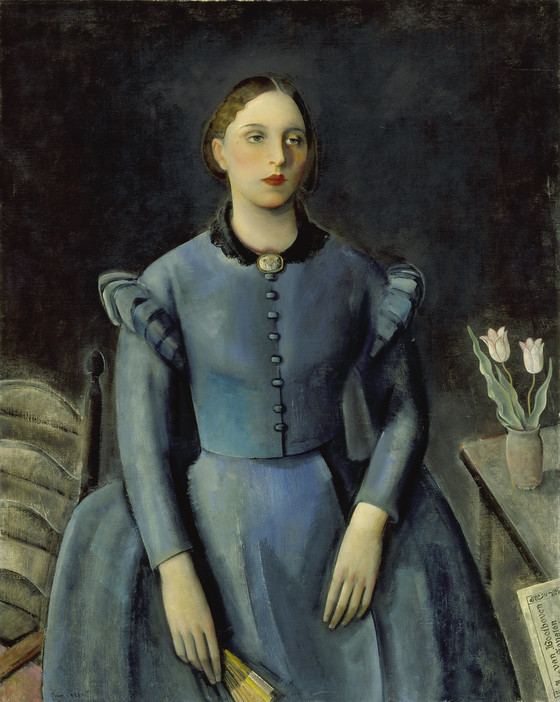It is said that it was George Bellows who first suggested to William Preston Harrison that Carroll should be represented in his collection and ROBERT HENRI who actually urged the commission that resul...
It is said that it was George Bellows who first suggested to William Preston Harrison that Carroll should be represented in his collection and ROBERT HENRI who actually urged the commission that resulted in the painting Lady in Blue. This seems plausible since Carroll knew both artists from Woodstock. In fact, Bellows was Carroll’s neighbor. The residence of the Ash Can artists prompted Woodstock modernists to become more concerned with realism.
Encouraged by Andrew Dasburg, Carroll had experimented with abstraction, creating cubist still-life paintings similar to the arrangement of tulips and sheet music that he incorporated into the composition of Lady in Blue. Carroll’s treatment of the figure as a series of cylinders no doubt was also influenced by the work of Cézanne and of Fernand Léger (1881-1955) and the other French purists. The compression of space into a series of overlapping planes and an emphasis on curving lines describing the figure, chair, and flowers reflect Carroll’s fascination with abstract line, an interest that critics sometimes thought too decorative. Color is limited to a cool palette of tin blue for the dress and gray for the background.
The painting’s archaic quality is in keeping with the strong interest of some modernists in American folk art during the late 1910s and early 1920s. The figure’s stiff, primitive character may also have been due the fact that it was based on an old photograph, which may also explain the painting’s monochromatic palette. Lady in Blue is a portrait of William Preston Harrison’s mother, Sophonisba Grayson Preston (c. 1834-1876), who was descended from the Puritans. Harrison suggested that the painting be titled Lady in Blue to avoid any criticism that might arise if a portrait of one of his relatives were installed in the museum. Regardless of the identity of the figure, the painting is of a type with the other images of single figures painted by Carroll in the 1920s.
More...
